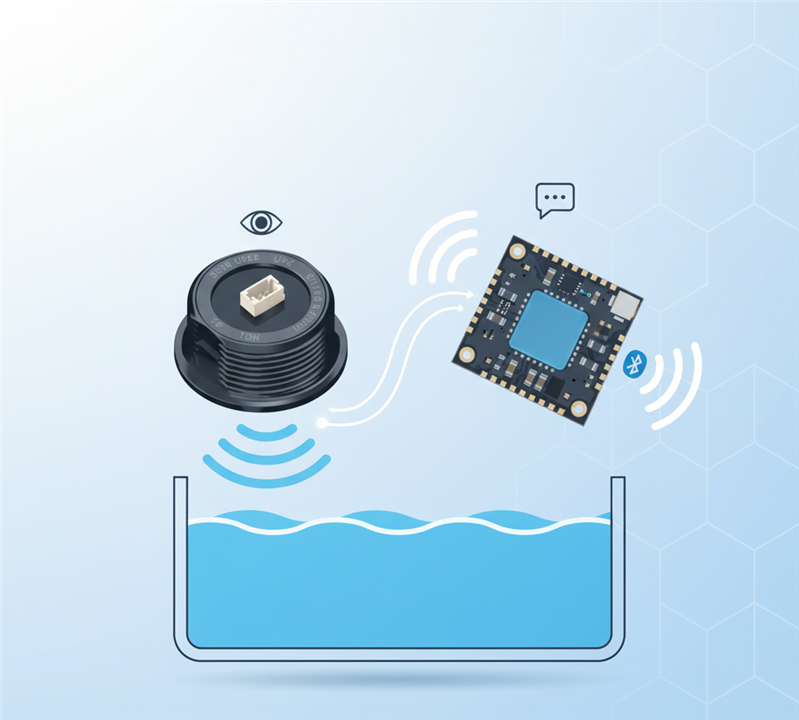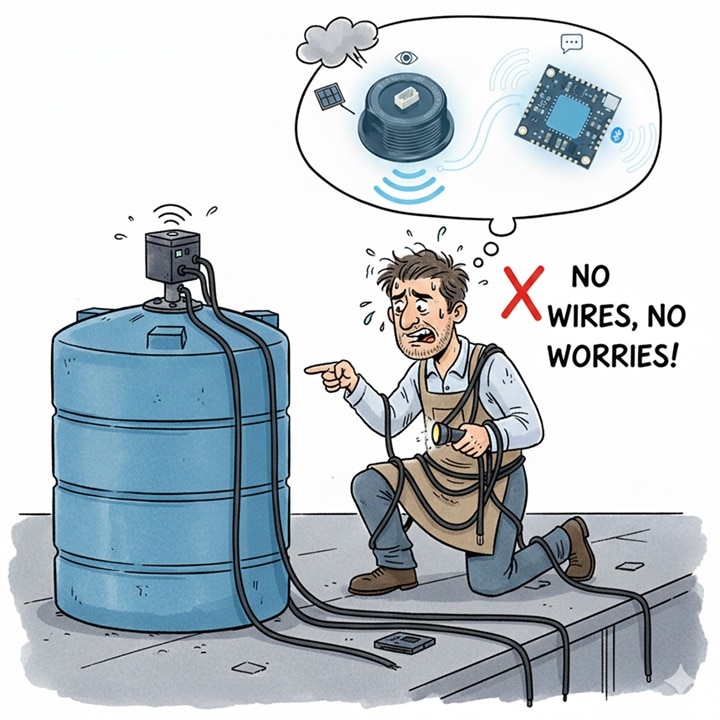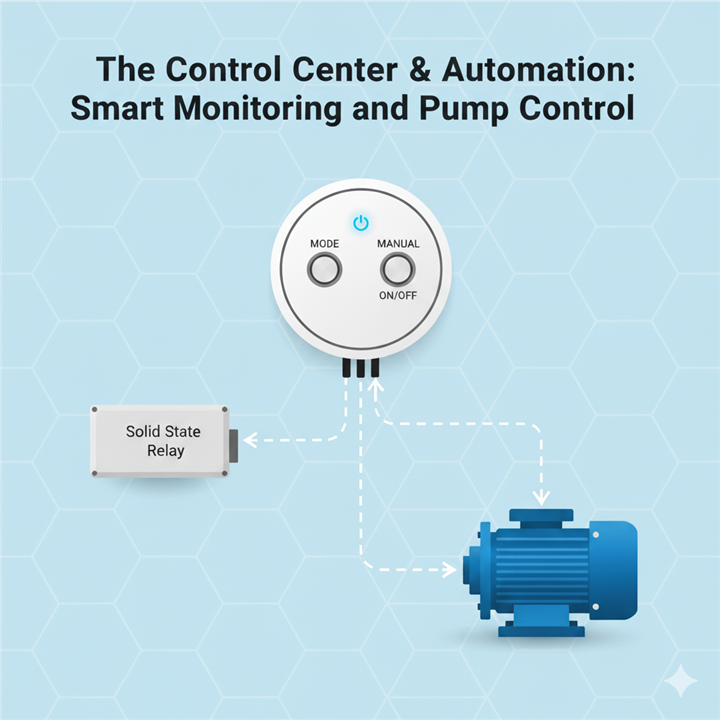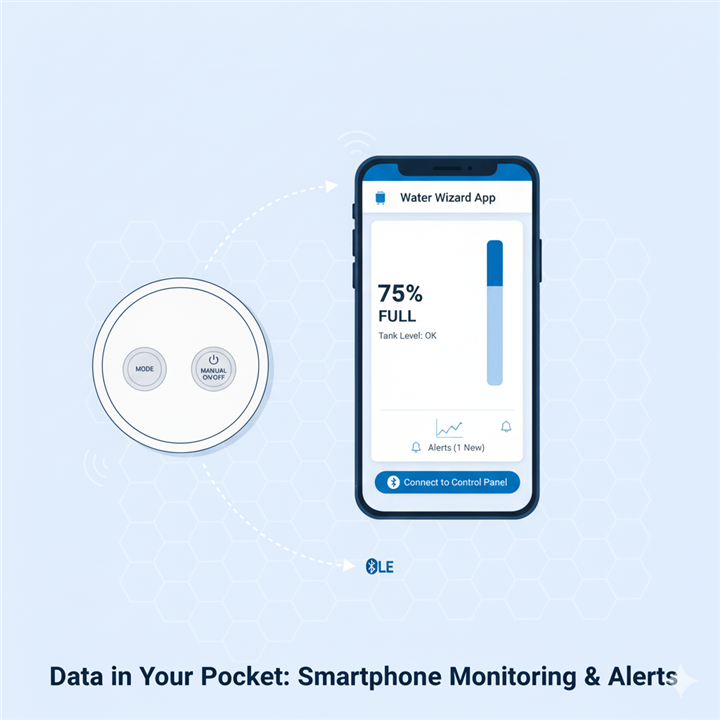**the images in this introductory blog are AI generated. I have used it for reference to describe the concept.
Table of Contents
This is the introductory blog for the “In Reach! - Ultrasonic Sensor Sensing Challenge,” and my project is something very familiar to all – a Water Level Monitor. A simple project with smartness of precise sensing, battery-efficient and completely wireless.
It's for those living in areas with unreliable water supply.
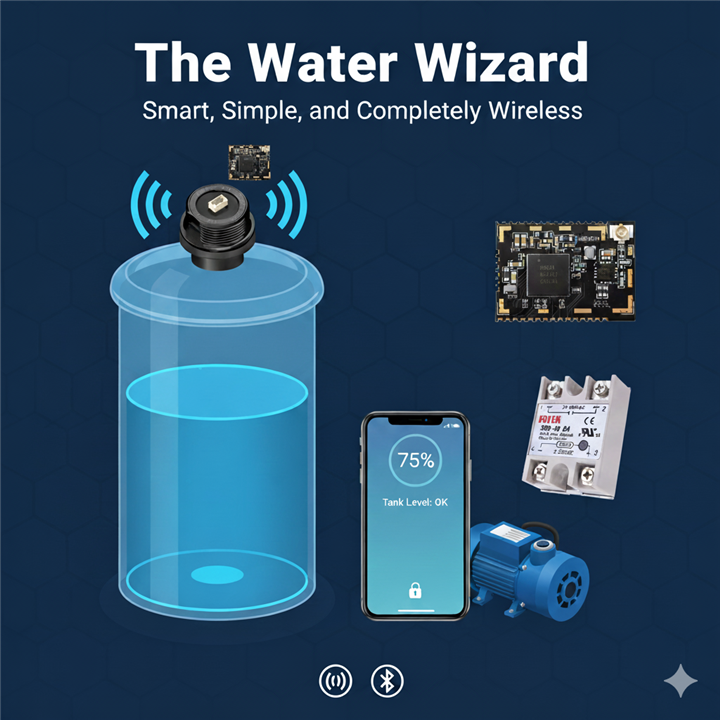
The Frustration of an Empty Tank
Well, I know that you all know how it feels to find out the empty tank suddenly and you are quite familiar with the water level monitoring devices. Still then trying to keep it short –
It's a common issue for people living in any region where water supply isn’t consistent. Resulting the motor runs too long, tanks overflow, or sometimes, the pump is never turned on in time or even running the pump dry.
The solutions are there as water level monitoring devices are available, but it needs long wires from the pump control unit to the sensor. Which also makes the installations complicated. Wires from float sensors or long cables increases the risk of break, corrode or cause leakage.
On the other hand, the advanced wireless devices are quite expensive and power hungry.
A Simple, Wire-Free Solution
The core goal of The Water Wizard is to create a battery-friendly, wire-free system to monitor water levels in any tank, whether it’s at home or out in the field. I’ll use the TDK USSM-plus-FS, an advanced ultrasonic sensor to measure the water level in the tank and use the Bluetooth Low Energy for long range energy efficient wireless communication. Primarily, I intend to utilize a couple of Nordic nRF5340 boards.
It sends water level data straight to a control panel and automates the pump when needed.
The Concept in a Nutshell
This project is about simplicity, affordability, and reliability. The target is to develop such a product that gives no hassle to the user and the key features are –
| {gallery}Concept in a nutshell |
|---|
|
The sensor - TDK USSM plus-fs ultrasonic sensor + nRF5340 |
|
Wireless solution - BLE - nRF5340 |
|
BLE nRF5340 + solid state relay |
|
Sample image of a companion app |
The Sensor Node:
In this project the sensor module will be consists of two main components.
I’m pairing the TDK USSM plus-fs ultrasonic sensor (the "eyes" of the system) with the incredibly energy efficient nRF5340 BLE module (the "voice"). The Ultrasonic sensor will accurately measure the water level, and the nRF5340 will process that data and send it out wireless.
No Wires, No Worries:
The entire sensor node sits right on or inside the tank. It uses Bluetooth Low Energy (BLE) Long Range mode and is designed for low power, avoiding cables for power or data. I'll be aiming for months of operation on a battery pack or potentially even a small solar cell. I'll try to make it simple and it should like 'a plug n play' sensor.
The Control Panel:
A separate Control Panel, also powered by an nRF5340, will receive the wireless data from the tank. This unit acts as the interface between the sensor and the pump automation..
Pump Automation & Alerts:
The Control Panel will actively control the water pump using a relay. I'll be using a magnetic contactor or Solid State Relay. This means we can automate the pumping: turn it on when the tank is low and off when it's full.
Data in the Pocket:
Finally, there will be an Android app which connects to the Control Panel, allowing to check the current water level, view history, and receive alerts right on the phone.
Micromanaging the power
A major issue for the wireless solutions currently available is that it's not only expensive, but also very much power hungry. The sensor nad communication module needs to be powered by a separate supply. I have to keep it in my mind to make this solution energy - efficient as much as I can.
My power management strategy will be putting the nRF5340 and TDK USSM into deep sleep when the motor is turned off. In my case the water pump is turned on manually twice a day and it runs around 30mins to fill up the tank fully. So, for most of the day, when the pump is idle, the nRF5340 can remain in its ultra-low-power sleep mode. So, it will be drawing only a few microamps (μA) to maintain an internal clock and listen for a "pump-on" trigger through BLE. This 'pump-on' trigger can be generated by the control unit itself after a certain amount of time automatically.
Comparatively the ultrasonic sensor draws most of the current when it's active. During this motor off period, the 'power down' mode can be activated which makes it draw nearly zero current. Upon receiving the signal from the cotrol unit, the system wakes up and takes a precise measurement.
Another option to further conserve the power could be adapting the sample rate. When the pump starts to fill up the tank the sensor can check the level every two minutes initially and upto 95% fill. As the tank approaches the 90% full mark it can increase the measurement frequency like every 30 seconds. I hope that we don't need to make continuous measurement and that can save the battery energy.
Exploring the Kit
This time I received the kit without any hassle - Thanks to TNT and element14 team for that.
The USSM1.0 PLUS-FS is an ultrasonic pulse-echo product intended for range-finding and presence-detection applications.
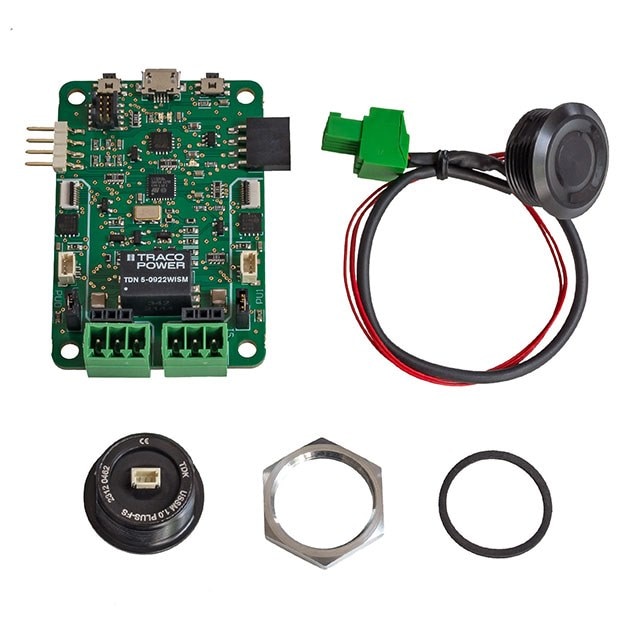
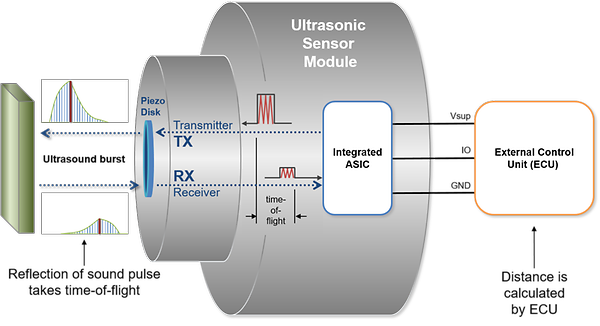
image courtesy: TDK Electronics
Key Features and Technical Advantages
The main feature of the USSM plus-fs for this project is the combination of robustness and advanced signal processing:
Integrated ASIC and Driver: The module is an all-in-one package. Single transducer can be used for both Tx and Rx or two of them can be paired together. The sensor includes the piezoelectric transducer, the necessary driver circuitry, and a high-end Application-Specific Integrated Circuit (ASIC) for signal processing. This integration handles complex Time-of-Flight (ToF) calculations internally, delivering clean, reliable digital range readings to the connected microcontroller (like the nRF5340 - for my project). I'll be using the 'single mode'. The range can be around 18cm to 5m. Detects transparent surfaces, insensitive to object color and density, which is important for this project. Also it has high immunity against electromagnetic interferences (EMI) noise, maybe helpful as I'll be using the wireless communication.
Mechanical Decoupling (Vibration Immunity): The piezoelectric disk, is physically separated from the main housing. I am not sure whether it's through a matching material or something else [which is not clear to me]. However, mechanically decoupled sensor element is a critical industrial feature. External mechanical vibrations can produce the false measurement result. It's good to see that this sensor has good immunity to the vibration, and I would like to check it out during my experiments.
Robust Environment Performance: The sensor has a compact, durable, water/dust protected chassis integration up to IP65/67 (EN60529). I'll check it's performance to dust, water splashes, and even temporary submersion. It's essential for outdoor water tank monitoring. It works in a wide range of lighting conditions, including full sunlight to complete darkness.
Power Down Mode: An interesting feature that gives me the opportunity to make it more energy-efficient. The inclusion of a dedicated Power Down Mode is crucial for battery-powered projects. I need to check it out - I think it can be activated by sending a command to the sensor using bidirectional IO (3-wire) communication interface.
**I'll cover more details in my second blog on the transducer itself. I had a previous experience of housing raw piezoelectric transducer in a PVC tube with matching material, backing material prepared from epoxy resin. I'll try to prepare a writeup on that too - it was interesting and I hope others will like it.
Application in Water Level Monitoring
For water level monitoring in the reservoir, there are general purpose ultrasonic sensor modules available with lower price range. But the TDK USSM plus-fs offers two major advantages:
-
High Accuracy and Range: In single mode, the range is 18 to 5m. It provides accurate, centimeter-level distance measurement over a range suitable for most domestic and industrial tanks.
-
Reliability in Adverse Conditions: We often experience rooftop water tanks prone to condensation, temperature fluctuations, and exposure to dust/insects. The USSM has a robust housing. Also it's more immune to vibration which can ensure that the sensor continues to provide stable, reliable readings. I'll try to check it's performance in adverse condition during my experiments to be rational.
Limitation
A major limitation could be the range of the nRF5340. In the long range mode [coded PHY] it should cover a good distance which can be helpful for farms like places where line of sight communication will be available. But for indoor, this range may get reduced. Which I need to check and if I cannot reach a good coverage, then I may need to think about some alternatives.

